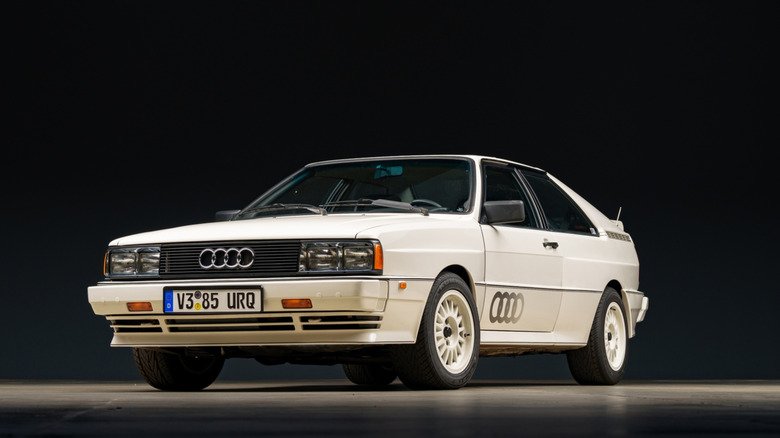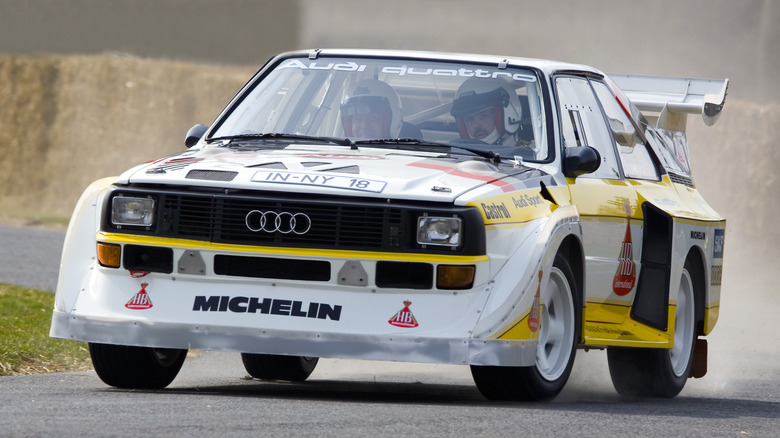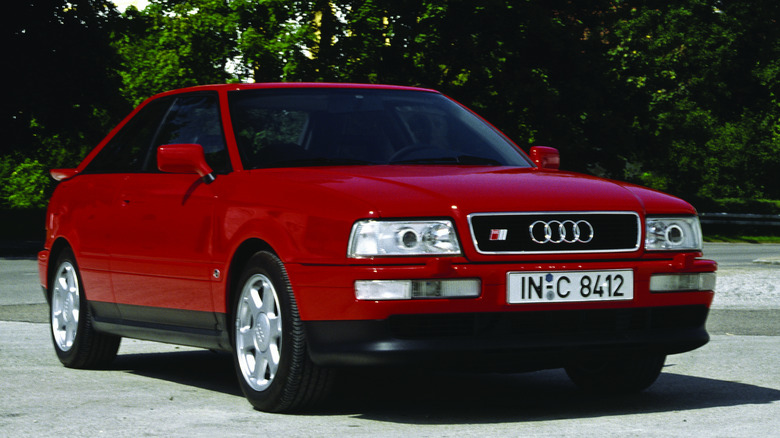What Model Replaced The Legendary Audi Quattro?
For decades, Audi has pushed the boundaries of style and innovation in the automotive industry, leading to the development of some models ranked among the best German cars in history. However, the Ingolstadt-based automaker had a rocky start. The company was founded in the early 20th century by August Horch. By 1932, Audi had become part of a conglomerate with Dampf-Kraft-Wagen (DKW), Wanderer Werke, Horch (the founder's first company), and Audi — unified together under the umbrella of Auto Union AG, the predecessor of today's Audi. The four rings in the company logo represent these four companies from the early days. After transitioning through a series of mergers with different owners like Daimler and Volkswagen, the company's title was finally shortened to its modern name of Audi AG in 1985.
Five years before its final corporate transformation, Audi launched the Quattro, one the most iconic rally cars of all time, which was named for its trendsetting all-wheel drive. This first generation is commonly referred to as the "Ur-Quattro," with the ur used as a common German prefix to indicate "original," or "first of its kind." For nearly a decade, its prominent engineering and design revolutionized the racing scene. At the start of the '90s, the Quattro model was retired and replaced with the Audi S2. However, Audi continued to implement the Quattro's technology for decades to come.
The Audi Quattro revolutionized AWD in racing
Drawing inspiration from the Audi 80, the first iteration of the Quattro appeared at the 1980 Geneva motor show with a turbocharged five-cylinder engine capable of 197 horsepower at 210 lb-ft of torque. To smooth out transitions, Audi's engineering team, led by Jörg Bensinger, installed a central differential and clutch pack so that the driver could adjust the allocation of torque between the front and rear wheels. Three years after its release and with several enhancements, the Quattro went on a wild three-season run, taking home four total drivers' and manufacturers' trophies at the World Rally Championship.
By 1986, the Audi Quattro and its racing team had amassed a grand total of 23 world rally victories . Moreover, future generations of performance cars began integrating AWD into their designs because of the Quattro's effective use of the technology on a variety of terrains. In 1987, the Quattro achieved some more major milestones, including victories at the East African Safari Rally and Peake's Pike Rally.
The Audi S2 was the main successor to the Quattro
While moving into the '90s marked the beginning of the end for the original Audi Quattro, the technology inspired by it — specifically the highly effective AWD system — would be installed into nearly 11 million vehicles sold internationally. Around the same time, Audi launch a B3-based Audi Coupé quattro that was essentially a commuter-styled equivalent of the original rally car. Sadly, unlike its competitive twin, this model performed unsuccessfully in sales, especially in American markets, due to a combination of factors like diminished power levels and a high price tag.
That said, it did lead to the development of other models, one of which was the Audi S2. With its compact body and subtle, sporty style, this surprisingly underrated successor displayed a harmonious aesthetic that earned a rank on our list of the 10 best Audi models ever designed. Moreover, the S2 shared a number of the same components as the original Quattro, like the 2.2-liter five-cylinder turbocharged engine, plus some enhancements. Despite the fact that it's often overlooked due to the famous reputation of its predecessor, the Audi S2 stands as a reasonable, commercial replacement to the legacy of the Quattro.


